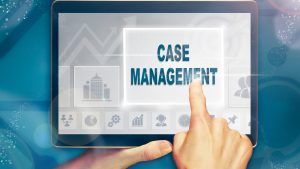As indicated by the term, predictive analytics forewarns or foretells future trends and patterns using historical data. It is also sometimes known as predictive modelling, using complex algorithms infused with standard statistical techniques, machine learning, deep learning, and other artificial intelligence technologies. It takes advantage of current and historical data to find patterns and make reliable futuristic insights ranging from market trends to consumer patterns, asset management, making future financial budgets and more. Predictive analytics has been in the market since the late 19th century when Henry Ford used it. Since then, in manufacturing, banking, retail and various other industries, predictive analytics has been an intelligent tool that acts as an excellent asset for companies to reduce their overall cost, save time, increase performance and succeed in the competitive industrial world. This article will explain some of the most famous uses predictive analytics have been applied for in reality.
Top Eight Business Uses of Predictive Analytics
Data-centric companies are the most to gain from predictive analytics. This is because for accurate predictions to be made, there must be ample data in a centralised system. It allows companies to be proactive rather than reactive. Here are eight of the most popular uses of predictive analytics applied in reality.
Churn Prevention
Churn refers to the number of customers a business loses in a given month or season. Churn occurs when a product has fewer sales, and a company receives multiple customer complaints increasingly. However, this can be prevented through predictive analytics. The entire point of churn prevention is to gain insights into the customer’s response to the service, price, and competition in advance. Hence, through such insights, churn prevention can be achieved by considering how consumers perceive a specific itemThereforece, instead of introducing a product in blind faith that it will take the market by storm, use predictive analytics to gauge the demand for such products. Predictive analytics will answer the difficult questions. This includes considering how successful the product is in the market, its competitive pricing, and how the product one business makes is different from another. All this can help predict how successful and profitable a product or service will be for the organisation.
Customer Lifetime Value
A vital business metric calculates the customer lifetime value, commonly known as CLV. Knowing this value contributes to creating financial budgets, optimising marketing efforts and more. CLV refers to the monetary value a customer brings into the business. It calculates the amount of money the consumer has spent on the products or services of the business in a lifetime. Assessing this using predictive analytics is a great way to study how consumers have interacted with past services or products of the company and predict how they may interact with the organisation in the future. Moreover, this data helps identify and create a database of loyal customers. This knowledge allows businesses to decide how much they should invest in each consumer. For example, if adverts are sent to a consumer worth over SGD 500 in three months but the consumer has only spent less than SGD 100, this is a clear situation where the company has incurred unnecessary expenses. Companies can therefore make smart financial investments and decisions with reliable insights drawn from predictive analytics.
Customer Segmentation
Customer segmentation refers to grouping consumers according to shared patterns or traits. Today, personalisation plays a vital role in the industrial world in success. It is no longer adequate to email everyone with the same offers. The more effort put into making each advert relevant to the user, the higher ROI a business will experience. Traditionally, companies have attempted to carry out customer segmentation based on age and geographical regions. This has proved to be an ineffective method. Different forms of segmentations can be created. Two of the most popular include ‘likelihood to purchase’ and ‘likelihood to churn’. For instance, the type of products featured under recommendations is formed on such segments, making it easier for companies to push sales in their targetted audience in one go.
Predictive Maintenance
Predictive Maintenance becomes a key factor, especially in industries that depend on a range of assets. Carrying out repairs or maintenance is costly, requiring businesses to spend enormous amounts when anomalies cannot be rectified easily. In this regard, predictive analytics powers predictive maintenance to identify future breakages in their initial stages. By doing so, steps can be taken to solve the issue as soon as possible before the asset completely breaks down and leads to increased downtime that affects the overall production. In turn, predictive analytics prevents losses from occurring and even strengthens the life cycle of each asset. Predictive analytics guarantees that assets are in their best condition by continuously monitoring the health of assets.
Risk Modeling
Risk is not only associated with asset breakdowns. There is a multitude of factors that can affect the performance of a business. This process of identifying what these possible factors could be and making a strategic plan to prevent them from occurring is called risk modelling. In other words, risk modelling focuses on identifying a company’s risk profile. Banking and insurance companies consider this a key metric in their operations. For instance, insurance companies can assess what incidents are covered and insured by considering historical and current data. Note that it is up to the company to have a risk management framework. Without such a plan, a predictive analytic-powered risk modelling system cannot be in place.
Quality Assurance
Quality is of the highest importance for customers to be satisfied with the product. Since quality also deems durability, where a product does not stay in good condition for a reasonable period after purchasing it, consumers may feel they have not received their ROI. This could, in return, lead to an ill reflection of the brand. A product can moreover be damaged whilst in the supply chain. Predictive analytics helps delivery companies safely transfer products according to their fragility and be careful during the packaging stage. Moreover, due to the integration of IoT sensors that help consumers and manufacturers to track the product wherever it goes, predictive analytics predicts realistic timelines for when the package will be delivered.
Fraud Detection
According to a study by LexisNexis, there has been a global rise in fraud in costs and volume by 19.8 per cent since 2019. According to the report, using predictive analytics can create a smooth and frictionless experience, thereby minimising the possibility of fraud incidents. Analytics is used as a form of authentication whenever customers log in and are used to further monitor suspicious behaviours throughout. In other words, predictive analytics can detect unusual patterns and behaviours to identify threats. While the number of fraud cases is enormous, it is hard to detect which one of them accounts for actual fraudulent activity. In this regard, predictive analytics helps companies to prioritise fraud cases that are most likely to be fraudulent. This becomes an important tool to protect businesses against cybersecurity threats.
Virtual Assistance
Ever wondered how virtual assistant tools such as Alexa and Siri are good in their responses? They are made with an infusion of AI, deep learning models and predictive analytics. In a business context, company websites commonly employ chatboxes for consumers to clarify their questions. Most often, the chatbots collect data whenever users visit the website and help accumulate data that would be helpful for prediction purposes. The bots are self-learning tools that predict accurate responses to the questions asked by consumers. The majority of the time, chatbots can handle any kind of question with a satisfactory answer. Hence, businesses can better utilise their staff for other responsibilities.
Keep Up with The Business World
Predictive analytics help futuristic businesses to keep up with the evolving market. From assessing consumer and market patterns to carrying out asset maintenance, and detecting fraud, the insights provided help companies save their finances and increase their profitability. Enjoy higher rates of ROI and critical insights for intelligent decision-making by investing in a solution that powers predictive analytics.






